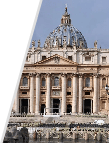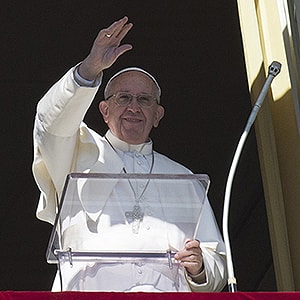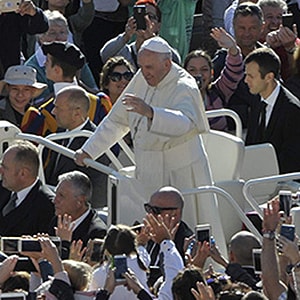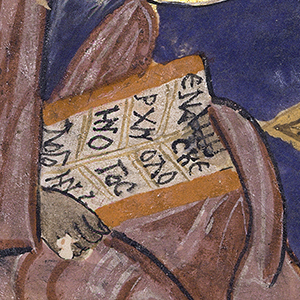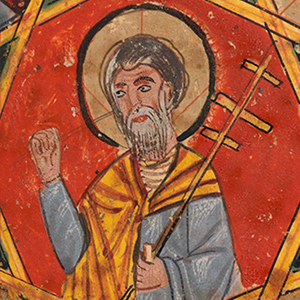
Churches celebrate special Way of the Cross for POWs and peace in Kyiv
By Svitlana Dukhovych
In the heart of war-torn Ukraine, a special Way of the Cross was celebrated on Friday, 11 April, in the capital Kyiv, in front of the historic Saint Sophia Cathedral.
Titled “The Way of the Cross for prisoners and for the return of peace in Ukraine,” the celebration saw the participation of former prisoners of war, war amputees, grieving relatives, and those still waiting for news of missing loved ones and brought together representatives from various Christian denominations — Greek Catholics, Roman Catholics, Orthodox, and Protestant.
The initiative was organized by the International Women's Movement for Family Values.
Archbishop Visvaldas Kulbokas, the Apostolic Nuncio to Ukraine, presided over the rite and reflected with Vatican News on the on the significance of the initiative which he described as both emotionally overwhelming and spiritually meaningful.
Here is the text of the interview.
How did this moment of prayer come about and what did it mean in this historical context?
Archbishop Kulbokas. It was a very touching initiative, organized by the “International Women's Movement for Family Values.” Almost every family during this time of war has lost someone, or has a prisoner of war, or a former prisoner, or someone wounded, or someone at the front. So most families, even if they didn’t seek it, found themselves in the war. This Movement organized an ecumenical Way of the Cross, which for me was a beautiful moment. More than beautiful, it was meaningful because around the ancient Saint Sophia Cathedral in Kyiv — the national sanctuary of Ukraine — representatives of various Churches gathered: Greek Catholics, Roman Catholics, priests from Orthodox Churches, Protestants, and representatives of other Churches. This event brought together people who wanted to accompany mothers and wives grieving for their loved ones fallen at the front or dealing with wounded and imprisoned relatives. They wanted to start Holy Week with Jesus in prayer, joining their experience and pain with that of Jesus the Redeemer, and offering ecumenical prayers together.
What did it mean for you to lead this prayer?
Archbishop Kulbokas. For me, it was already moving to know this initiative was taking place, but when it happened, I was moved to tears because the texts of all the Stations of the Cross were read by people who personally live experiences that mirror Jesus’ suffering. For example, during the First Station, the one about the Jesus' condemnation, the cross was carried and the reflection read by a former prisoner of war, amputated of a leg and an arm.
The second station, when Jesus takes up the cross, was read by the wife of a former prisoner, because for every wife, every mother, it is suffering — a cross.
The station of Jesus’ death featured a military doctor who often sees the fallen on the front. I thought in my heart: when we have such experiences in life, which already resemble the Passion of Jesus, and we unite them in prayer with Jesus — or at least try to — it’s the greatest thing. So this human and spiritual dimension — united — was truly moving. I think it’s rare to witness a Way of the Cross where not only the readers but all attendees — and there were maybe 200–300 people — are in tears. So these tears for war were joined with the tears of Jesus. And that was our prayer together: for peace, for the release of all prisoners, and for comfort for their families.
What does it mean for people who have suffered so much to take part in Jesus’ suffering?
Archbishop Kulbokas. To share one's experience through faith and to cry with Jesus. I believe personal experience helps to understand, at least partially, the Passion of Jesus. Many mystics say this, and there are many testimonies from the sick that support it. But beyond that, when we live suffering in our own flesh, through faith, it becomes a grace.
Another aspect is that in that moment, there’s no need for someone else to necessarily understand or accompany you, because you are living the Cross — the Cross is with you. In that moment, it's just you and God. That is the grace.
What reflection do you have on the fact that this year, all denominations celebrate Holy Week and Easter on the same day?
Archbishop Kulbokas. The fact that this year Easter, according to both main calendars — Gregorian and Julian — falls on the same date, made things much easier. It’s a joy for me, and I see it on the faces of many Catholic brothers and also Orthodox and Protestant brothers. It’s a joy to live Easter together. And in fact, during that prayer of the Way of the Cross, in addition to the intentions for prisoners and peace, I also had this one in my heart: I was praying for Pope Francis and that the Lord may grant us the grace to find a way to unify the celebration of Easter among all Christian Churches and communities as soon as possible.
Thank you for reading our article. You can keep up-to-date by subscribing to our daily newsletter. Just click here



